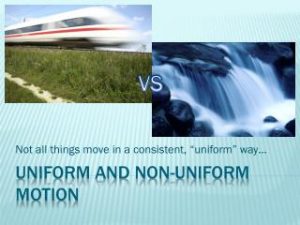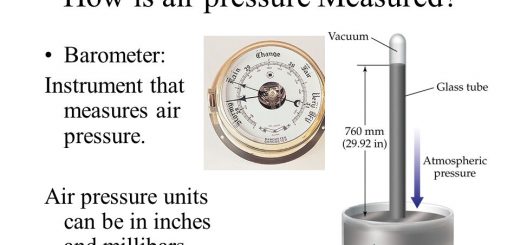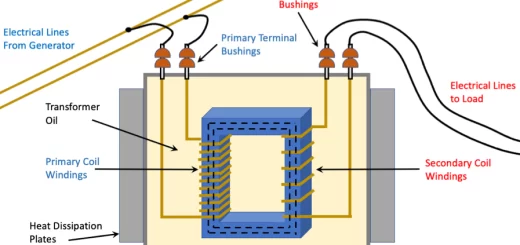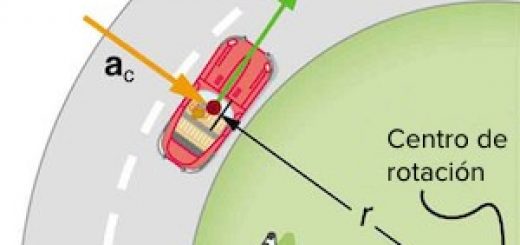Uniform Acceleration and Non-uniform Acceleration
If the velocity of an object is changed from one point to another either in magnitude or direction , This change in velocity with time is known as acceleration and such motion is called accelerated motion .
Acceleration
Acceleration is the change of the object velocity per unit time or it is the rate of change of velocity , Accelerated motion is the motion in which velocity changes with time , Acceleration of motion can be found by the relation :
Acceleration = Change in velocity / Time of change
Acceleration = ( Final velocity − Initial velocity ) / ( Final time − Initial time )
a = Δ v / Δ t = ( v2 − v1 ) / ( t2 − t1 )
The unit of measuring acceleration is m/s² or km / h² and its dimensions LT−2 , You can convert the unit of measuring acceleration from km / h² into m / s² as follows :
1 km / h² = 1 km / ( 1 h )² = 1000 m / [ ( 60 × 60 ) s² ] = 5 / ( 18 )² m / s²
Types of Acceleration
Uniform Acceleration
It is the acceleration in which the object changes its velocity with equal intervals of time .
Non-uniform Acceleration
It is the acceleration in which the object changes its velocity with unequal intervals of time , The acceleration may be positive acceleration ( increasing velocity ) , Zero acceleration ( uniform velocity ) , Negative acceleration and in this case it is called deceleration ( decreasing velocity ) .
When the velocity of object increases with time , This is called positive acceleration , when the velocity of object is constant with time , This is called zero acceleration , when the velocity of object decreases with time , This is called negative acceleration .
Positive acceleration
It is the acceleration of the object when its velocity increases with time , Example : As the ball rolls down the inclined plane .
Zero acceleration
It is the acceleration when the velocity of object is constant with time , Example : as the ball moves along the smooth horizontal plane .
Negative acceleration
It is the acceleration of the object when its velocity decreases with time , Example : As the ball climbs up the inclined plane .
Graphical representation
When plotting the graphical relationship of ( velocity – time ) we may get :
A straight line that may start from the origin , By finding the slope of the straight line , we obtain the acceleration of the object motion , when the slope of line is positive , It is a positive acceleration , The object is moving at a uniform acceleration .
A straight line parallel to the time axis , It is zero acceleration , The slope of line = 0 , The object is moving at zero acceleration .
A straight line that may end at the time axis , The slope of line is negative , It is negative acceleration , The object is moving at a uniform deceleration .
The projectile whose velocity decreases till reaches zero at its maximum height , represents an example for negative acceleration .
When the object moves at a uniform acceleration = 10 m/s² , It means that the object velocity increases by 10 m/s every second .
When an object decelerates uniformly at − 10 m/s² , It means that the object velocity decreases by 10 m/s every second .
Guidelines to solve problems
To solve the problems of acceleration , use the diagram :
- Where Δ v is the change in velocity which determined by the relation : Δ v = vf − vi .
- If the object moves at uniform velocity , its acceleration of motion = zero because Δ v = zero .
- When the object starts motion from rest , its initial velocity ( vi ) = zero .
- When the object comes to rest , its final velocity ( vf ) = zero .
- When the final velocity ( vf ) > the initial velocity ( vi ) , acceleration is positive .
- When the final velocity ( vf ) < the initial velocity ( vi ) , acceleration is negative .
- When the final velocity ( vf ) = the initial velocity ( vi ) , the acceleration is zero ( uniform velocity ) .
- If the velocity and acceleration have the same direction then they have the same sign ( Acceleration motion ) .
- If the velocity and acceleration have opposite direction then they have the opposite signs ( Decelerating motion ) .
The meaning of ( − ve ) sign for :
- Displacement : The body moves in opposite direction .
- Velocity : The body moves in opposite direction .
- Δ v ( change in velocity ) : The velocity of the body decreases .
- Acceleration: The velocity decreases or acceleration is in opposite direction to velocity .
Time is never written with negative value as it is a scalar quantity .
Acceleration types, units, importance & Graphic representation of moving in a straight line
Safety skills , Applications of motion with uniform acceleration ( Free fall & Projectiles )













Thanks
You are welcome